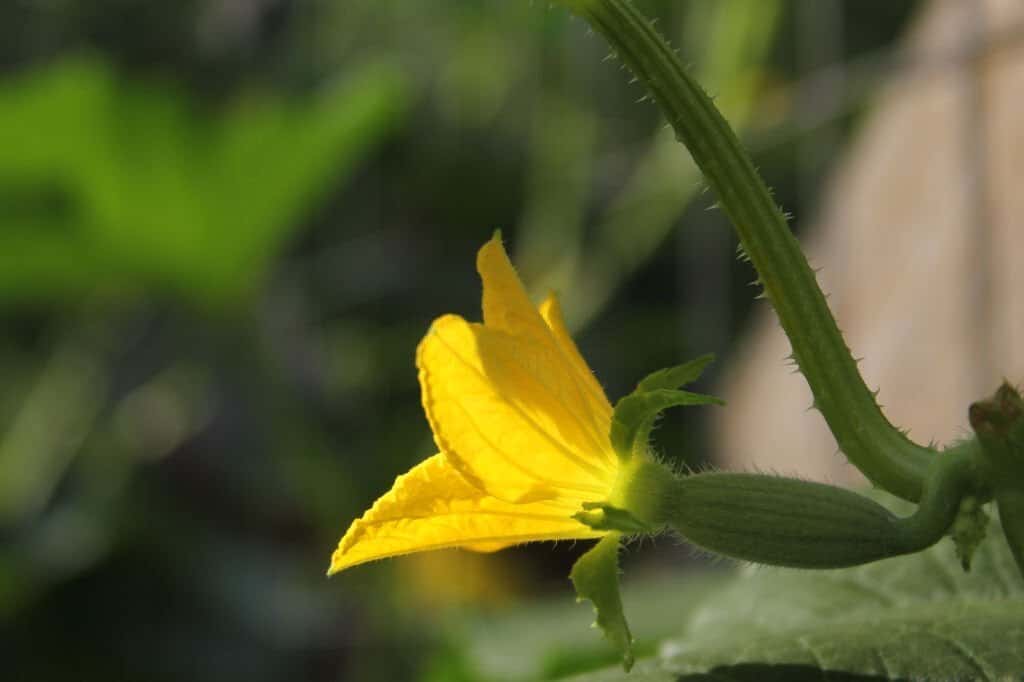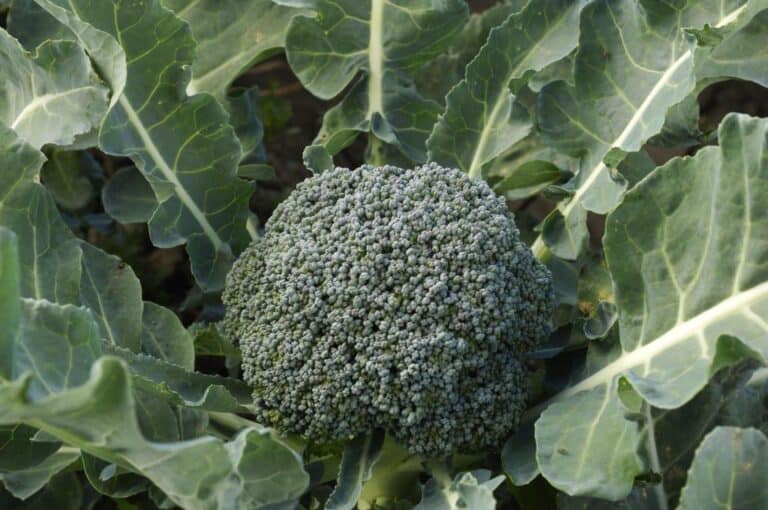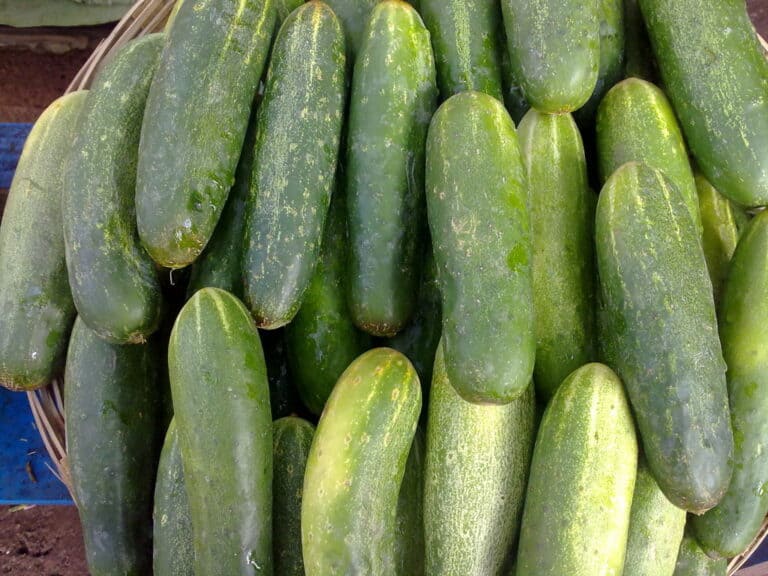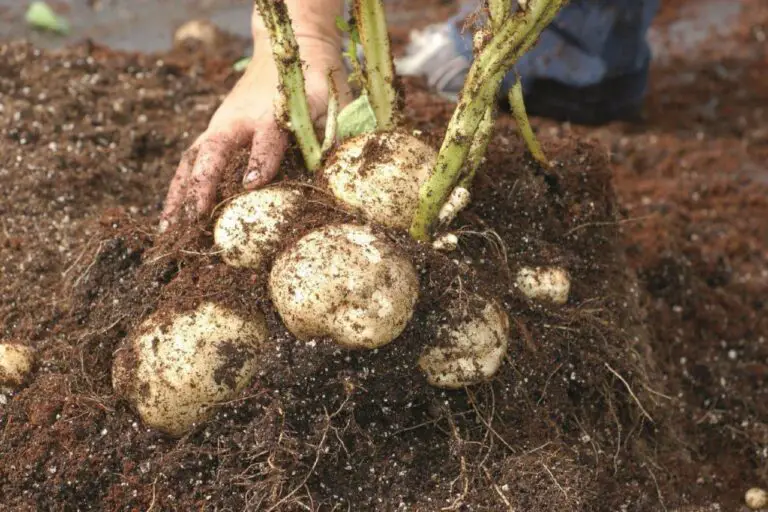Male and Female Cantaloupe Flowers: What’s the Difference?

Cantaloupes are a type of melon that is typically grown in warm climates. The plants can be grown from seed or transplanted. The flowers of the cantaloupe plant are pollinated by bees and other insects.
Identifying cantaloupe flowers will help you determine when your cantaloupes will be ready for harvest and ensure that they are pollinated effectively.
When growing cantaloupe, it’s important to know the difference between the male and female flowers. A good place to start is by knowing how to tell the difference between male and female flowers on the cantaloupe plant.
So, what’s the difference between male and female cantaloupe flowers? The male flower grows on a long stem and has a small, round pod at the end. The female flower is smaller and grows in the leaf axil of the vine. It has a small, green fruit at the base. The female flower produces the cantaloupe fruit.
In this article, you’ll learn about cantaloupe flowers and their purpose in the cantaloupe growth stages. In addition to that, you can gain an understanding of cantaloupe pollination, either naturally or by hand.
The Difference Between Male and Female Cataloupe Flowers
Most vining crops, like cucumbers, melons, and squash, have a similar flowering habit.
On the cantaloupe plant, male flowers bloom 7–14 days before female flowers appear. Male flowers have no bulge beneath the blossom and a short stalk joining them to the vine.
The male flower of the cantaloupe plant has an open stalk called a stamen in its center. The pollen is found inside the stamen.
On the other hand, just behind a female flower will be a bulge. That bulge is the ovary of the female flower that, once pollinated, will start to become a cantaloupe.
How Long After Cantaloupe Plant Flowers Until Cantaloupes Are Ready to Harvest?
It will take about 50 days after the first flowers appear on the cantaloupe plant until the cantaloupe is ripe and ready to harvest. Cantaloupe plants take around 70-90 days after sprouting to reach maturity and will begin to flower around 30 days after sprouting.
The first flowers to appear on the plant will be male flowers, and female flowers will show up 1-2 weeks later. After a female flower is pollinated, it will take around 45 days to become ripe and ready to harvest.
Monoecious Vs Gynoecious Flowering Habits
Most vining plants are naturally monoecious, meaning they have both male and female flowers on the same plant. This often leads to the same question from gardeners: why do I have so many flowers on my plants but so few fruits?
The answer is that monoecious varieties of vining plants will commonly have 10-1 male to female flowers. Gynoecious plants have been bred to have all female flowers. More female flowers equals more fruit.
There are plenty of gynoecious varieties of cucumber plants available, but in my experience, I’ve not found melon seeds that are gynoecious.
Maybe because the melon plant itself can only support a limited number of melons, whereas a cucumber plant can produce 20 or more cucumbers. Or maybe cucumbers are more popular than cantaloupes?
INFO![]()
When you buy a pack of gynoecious cucumbers, there will be a few seeds in the packet that will be marked with dye or a marker that are monoecious.
This is done so that you have some male flowers around to pollinate all those female flowers. Commercial cucumber growers often use gynoecious varieties with some monoecious plant rows mixed in to provide pollen.
Do You Need Two Cantaloupe Plants for Pollination?
You don’t have to have two cantaloupe plants for pollination to work. Cantaloupe plants are monoecious, which means that the same plant has both male and female flowers. All you need for effective pollination and cantaloupe growth is one plant.
If you are growing just one cantaloupe plant, hand pollination is a good idea. If you have a significant garden or have a good amount of nature around, then you’ll most likely get plenty of good bee activity, so it’s not necessary but is especially important if you’re growing on an apartment balcony.
Look up any video on cucumber, watermelon, or squash hand pollination and the technique is the same.
You can use a paint brush and swirl it around the male flower and then swirl it around the female flower. Another way is to pinch off the male flower and pull off the petals to get down to the stamen with the pollen and smear that around the female flowers.
Tips For Successful Pollination
Consistent rainy and overcast weather, hot temperatures over 85 degrees, or low temperatures below 65 degrees can lead to less insect activity and result in poor pollination and yields. If more than a few days of your cantaloupe pollination period is like this, consider hand pollinating the plants.
Hot temperatures over 85 degrees can lead to less insect activity and pollen drying out and becoming not viable. Using shade cloths during the hottest hours of the day and watering more frequently during hot weather can help the plants be less stressed during this critical time in their life cycle.
TIPS ![]()
If you’re growing a small number of plants or are growing on an apartment balcony, the chances go up that there won’t be enough bee activity to successfully pollinate your plant/plants. The solution is a simple one, hand pollination!
How to Pollinate Cantaloupe Flowers by Hand
According to the Old Farmer’s Almanac, wet or chilly weather might delay the blooming of female flowers. Bees and other pollinators are also influenced by bad weather. When it’s chilly or rainy, they stay home rather than fly out to pollinate flowers.
You may hand-pollinate cantaloupe flowers with a little paintbrush when they need it to ensure fertilization. You can cut the stem with sterile scissors and submerge it in water for the night like a flower in a bouquet to guarantee there is an accessible male bloom. On a morning without rain, when the female flowers bloom between the hours of 6 and 9, use a little paintbrush to collect pollen from the male flower’s stamen. One flower at a time, swirl the pollen-covered paintbrush over the stigma of the female bloom.
Use kneeling pads, stools, or gardener’s knee pads to protect your knees and back while pollinating the flowers. Wear gloves as well to shield your hands from the thick, nearly thorny vines. By soaking the blades in Lysol or rubbing alcohol, you may sterilize any cutting implement.
Cantaloupes Cross-Pollination
A cross-pollination of cantaloupe will not affect the fruit itself but the seeds inside the fruit. Only if you want to collect the seeds from the cantaloupes to grow another year should you be worried about cross-pollination.
Plants will only cross-pollinate with plants of the same species, so a cantaloupe cannot cross-pollinate with a watermelon or a cucumber.
A cucumber is in the same family but is not the same species. Cantaloupes are Circumus melo along with muskmelons, honeydews, and casabas that the plant can cross-pollinate with.
That being said, there are a few ways to prevent cross-pollination if you’re growing multiple melon varieties and want to keep your seed genetics true. Once flowers start to appear, check on the plant regularly for the first female flowers. Cover female flowers with a cloth bag and tie to prevent bees from getting to them.
Another way is to space different melon varieties far apart. It helps to have physical barriers like a patch of trees between them. You can also successively plant melons so that one variety is not in the process of pollinating while the other is.
Conclusion
In conclusion, the flowers of male and female cantaloupes are quite different in appearance. The male flower has a long stem, while the female flower has a short stem. The male flower also has a large, bell-shaped bloom, while the female flower has a small, disk-shaped bloom. Additionally, the male flower has numerous pollen-producing stamens, while the female flower has none.







